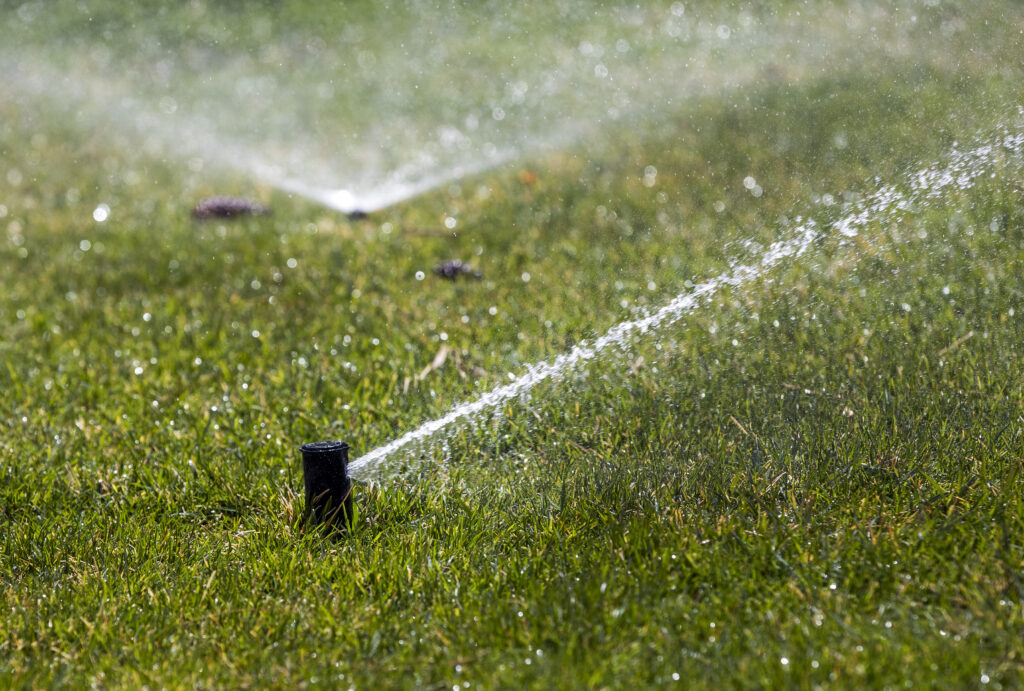With new law, Las Vegas water agency bets on ‘aggressive municipal water conservation measure' to remove decorative turf, conserve Colorado River supply
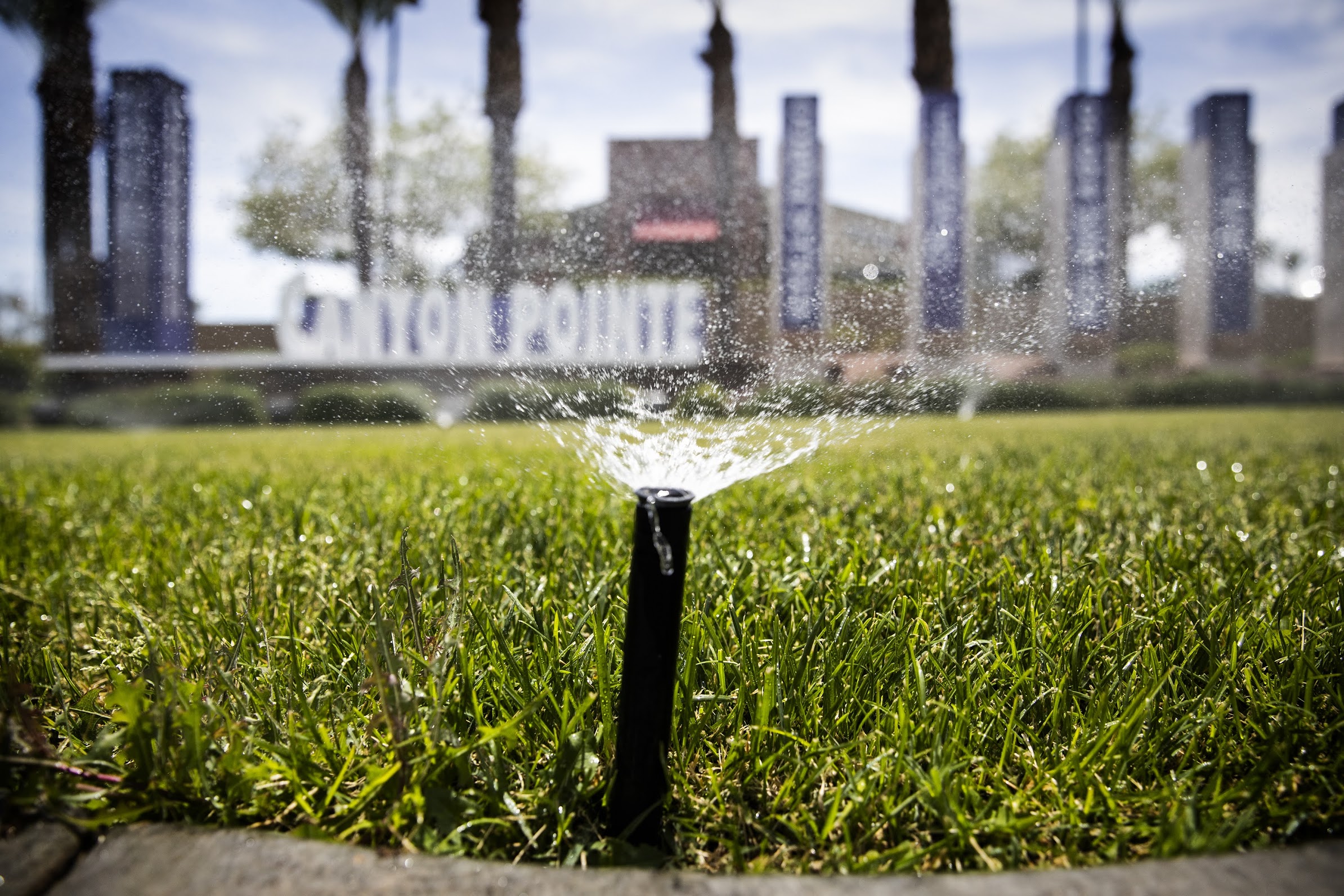
The backdrop for the legislation was set hundreds of miles away from Carson City, where the Colorado River meets Lake Mead and the Hoover Dam outside of Las Vegas.
Over the past two decades, Lake Mead, which holds nearly all of Las Vegas’ water, has dropped more than 100 feet amid drought and overuse. In response, federal regulators expect to declare the first-ever shortage for the Colorado River next year, triggering cuts to Arizona and Nevada’s allocations.
With Lake Mead approaching critically-low levels, the Southern Nevada Water Authority recently turned to the Legislature to double-down on its existing strategy for using less water: turf removal.
Earlier this year, Las Vegas water planners asked the Legislature to pass a new law that prohibits water-intensive decorative turf within medians, along roads and in business parks. Lawmakers approved it with little opposition and Gov. Steve Sisolak signed the bill on Friday.
Now, the water authority, which serves the Las Vegas metro area, is tasked with implementing what its general manager, John Entsminger, described as probably “the most aggressive municipal water conservation measure that's been taken in the western United States.”
For decades, the water authority has been looking at the prolonged drought and preparing for shortages. Officials with the agency stress that they are able to weather the expected cuts because Las Vegas is already consuming less water than it is entitled to use.
But they are also looking to a future where the population of Las Vegas continues to grow — Nevada is one of the fastest-growing states — as climate change poses new challenges for managing an overused river system shared by about 40 million people across the Southwest.
The legislation, AB356, aims to reduce per capita water use by prohibiting Colorado River water from being used to irrigate ornamental turf not used for a single-family home after 2026. Ornamental, or nonfunctional, turf typically refers to grass that is installed for decorative purposes and is rarely walked on or used.
Entsminger, in a recent interview, said the prohibition would result in significant water savings. The removal of an estimated 3,900 acres of decorative turf could save roughly 9.3 billion gallons of water annually — about 10 percent of the state’s entire Colorado River allotment.
“Being able to save 10 percent of our total water supplies, without really impacting any quality of life, is really a tremendous achievement and a benefit for the overall community,” he said.
In Carson City and elsewhere, politics around water are often fractious. State-backed proposals to change water law died early into the legislative session. But the water authority’s plan earned broad buy-in from rural and urban lawmakers, industry groups and environmental groups, even some of the same people who have criticized the agency’s legislative maneuvering in the past.
“It’s an old trope in Nevada politics that your enemy one day is your friend the next day,” said Kyle Roerink, executive director of Great Basin Water Network, a coalition of water users who supported the effort. “That doesn’t foreclose on the fact that we could be at odds again down the road as it relates to water policy. In this specific case, I was thrilled to work with them.”

Addressing decorative turf
The water authority serves more than 2 million residents and the millions of tourists who come to Las Vegas each year. To understand where the decorative turf is and how much water it uses, the agency uses aerial imaging that reveals where water is evaporating.
“And then we use that data to make estimates of how much [ornamental turf] we think is in each sector,” said Colby Pellegrino, deputy general manager of resources for the water authority.
The agency estimates, for instance, that about 1,500 acres of decorative turf exists within the footprint of multi-family residences, a category that includes apartment buildings. About 1,000 acres of the turf exist at commercial and industrial properties.
In an arid climate like Las Vegas, one that is only predicted to become warmer as the climate continues to change, the amount of water consumed to irrigate grass can add up quickly.
A square-foot of grass needs about 73 gallons of water each year to survive. The legislation would require the removal of about 3,900 acres of decorative turf (the final version of the bill exempts single-family residences). Assuming all of the grass is converted to desert landscaping, which uses about 18 gallons each year, the bill would save about 9.3 billion gallons of water.
For years, the water authority has offered cash incentives to residents and businesses looking to convert turf to desert-friendly landscaping. But in an era of cutting back, the program has run into its limits, as Entsminger noted at a water authority board meeting earlier this year.
The agency has met resistance from homeowners associations who see decorative turf as an appealing feature, Entsminger said. At the board meeting, the agency presented one response from the Altura community within Summerlin: “...our community chose Altura for the beautiful green entrance. As we are well aware there is not much of it unless you live on a golf course. With that said, Altura is declining to move forward with the proposed turf replacement.”
The water authority also encounters other types of challenges in removing decorative turf. Apartment buildings and commercial properties sometimes have a diffuse ownership structure — governed by layers of LLCs — or out-of-state owners who are accustomed to grass-centric landscaping.
Water authority officials say those ownership dynamics can make it challenging for the agency to contact a property owner about decorative turf. In other cases, out-of-state property owners, unfamiliar with the arid climate of the Southwest, might not understand the severity of the issue.
In all, turf removal has declined since the 2000s and stayed below the water authority’s goal of converting at least 150 acres per year, even after the agency increased the rebates in 2018.
“The era where just carrots are going to get [us to] where we need to get is coming to the end,” Entsminger said during the March board meeting. “We’re going to have to use some sticks.”
The water authority board, comprising local elected officials, agreed. In addition to the issues around turf removal, Entsminger raised another argument for acting: consumptive use — the total amount of water used by Las Vegas and not recycled in Lake Mead — ticked up in 2020.
“We’re probably going to have to make some harder decisions this year to right the curve,” said Marilyn Kirkpatrick, who chairs the agency’s board and the Clark County Commission.
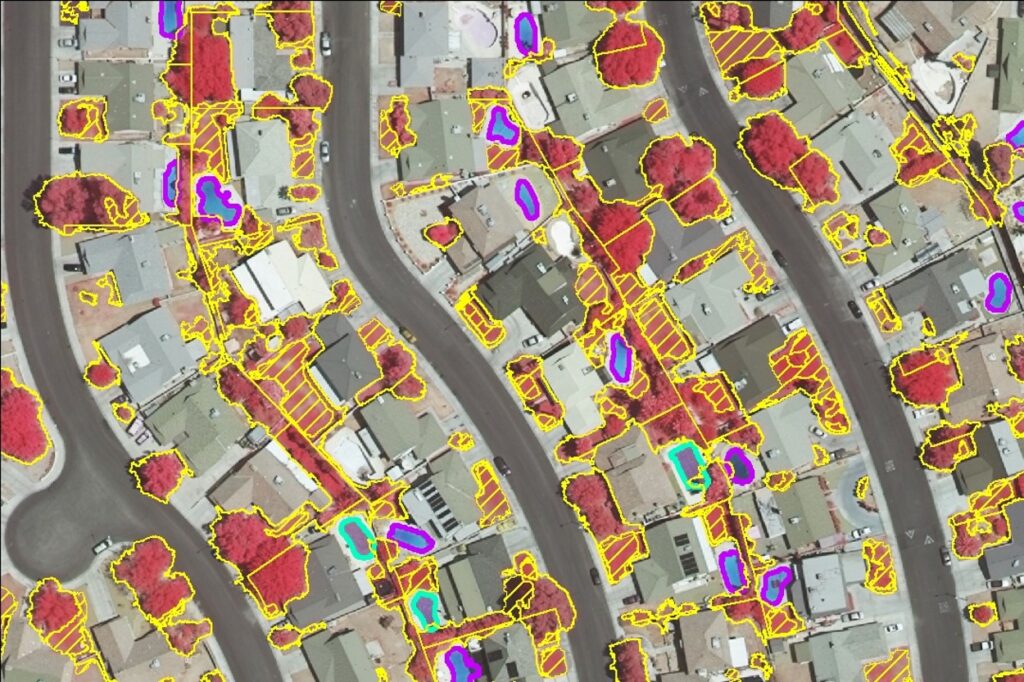
Flipping the script in Carson City
Before Assemblyman Howard Watts III (D-Las Vegas) was elected to the Legislature and came to chair the Assembly Committee on Natural Resources, he worked with the Great Basin Water Network. The advocacy group is best known for fighting against the Las Vegas water authority’s decades-long effort to pump rural groundwater from rural eastern Nevada to urban Las Vegas.
Now, as chairman of the legislative committee, the roles were reversed. Watts actively helped the water authority get its legislation to the governor’s desk. During an interview in his Carson City office last month, Watts described the new law as “hugely significant in a couple of ways.”
Watts said he viewed the turf removal legislation as “the next step in a paradigm shift for the Southern Nevada Water Authority", one where more emphasis is placed on conservation of its existing Colorado River supplies, rather than importing new supplies.
“I worked for a long time to try and get the authority to move away from the pipeline project in eastern Nevada, which they’ve done,” Watts said. “As a result, they know that the Colorado River is their primary source of water for the foreseeable future — and we need to do more to protect and enhance that source.”
When the legislative session began in February, none of the proposed bills addressed Colorado River conservation — at least directly.
But one bill, AB356, proposed by the Nevada Department of Conservation and Natural Resources, looked at water issues more broadly. The bill, as it was originally proposed, aimed to create a conservation credit system for managing water rights. At the same time, there were rumblings that the water authority wanted its own conservation bill.
The market-based approach in AB356, along with companion legislation (AB354) to establish water banks, was received with skepticism from conservationists, ranchers and farmers. They were concerned the state’s proposal was not fully vetted and could lead to speculative behavior.
In that opposition, the water authority saw an opening.
In April, a few weeks after the agency’s board meeting, water authority lobbyist Andy Belanger proposed an amendment to AB356 that replaced the original bill with the turf removal program.
At the meeting where the water authority introduced the idea, a group of key players came out to back the amendment: The Vegas Chamber, the Southern Nevada Homebuilders Association and local governments. Environmental advocates quickly backed the plan, too. The Center for Biological Diversity, a conservation group, released a supportive statement that same day.
With Watts’ help, AB356 was amended to become the water authority’s bill. It eventually passed unanimously in the Senate. It then passed on a largely party-line 30 to 12 vote in the Assembly, with four Republicans voting in favor. On Friday, Sisolak signed the bill into law.
“It's incumbent upon us, for the next generation, to be more conscious of our conservation and natural resources, water being particularly important,” Sisolak told reporters last week.
Sen. Pete Goicoechea (R-Eureka), well-known in the Legislature for having vast knowledge of Nevada water law and being a critic of the water authority’s pipeline project, voted in favor of the bill.
In an interview, he said the numbers the water authority presented spoke for themselves. They showed significant savings.
Goicoechea initially raised concerns that removing that much grass from the valley could increase surface temperatures, but he said he was assured by the water authority’s plans to offset those impacts with the planting of new trees on drip irrigation.
“It clearly is an area that has to be addressed,” he said, referring to nonfunctional turf.
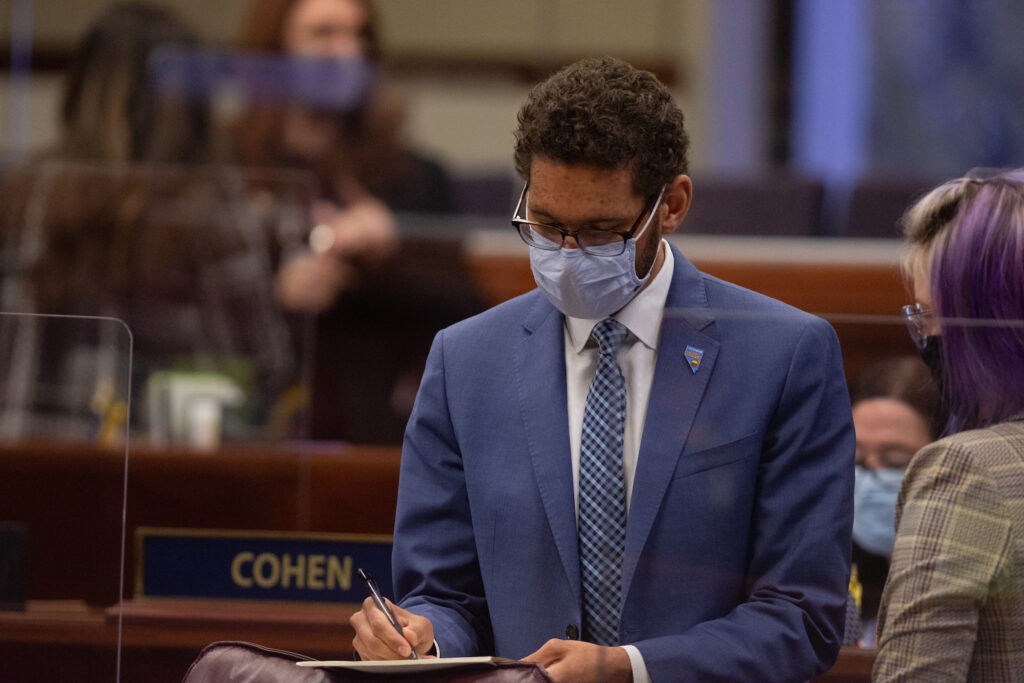
Setting the stage for a drier future
Now the challenge is implementing the turf removal program.
The legislation leaves much of that up to the water authority’s board of local elected officials. But it also calls for the creation of a Nonfunctional Turf Removal Advisory Committee. Most importantly, it sets a target date about five years from now — Dec. 31, 2026 — for the removal of most of the 3,900 acres of grass.
That year is also important for the Colorado River.
Existing rules for how to manage Lake Mead and the Colorado River expire in 2026. Leaders from the seven states that use the river, Colorado River tribes, environmental groups, agricultural interests and developers are gearing up for negotiations over how water from the river is managed as climate change increases the risk of shortages.
In a recent interview, Entsminger said the situation is serious, but that the agency is preparing for cuts by lowering demand. The turf removal legislation is one of several programs. He said removing the 3,900 acres of turf would nearly offset the deepest cuts the water authority agreed to under the Drought Contingency Plan, an agreement that spells out tiered cuts during drought.
“When people see the headlines about the hydrology on the Colorado River, when they read about these looming shortages, I think they need to know that that is serious,” he said. “That is not hyperbole. But we as a community have the tools at our disposal to meet that challenge.”
For developers and environmental groups, there is also another side of an equation: Growth. Eyeing population growth, Clark County is actively looking to increase the Las Vegas footprint.
Conserved water can also serve as a new water supply. Roerink, who leads the Great Basin Water Network, said it was not lost on him that the business community, including homebuilders and the Vegas Chamber, came out in strong support of the legislation to remove decorative turf. But he warned about the rush to put conserved water back into use for homes or new developments.
“That would be a tragic mistake,” he said.
Watts acknowledged the concern. Several big-picture trends that are driving growth in Las Vegas and across the Southwest, he noted, and it’s important for policymakers to be prepared. It would be imprudent, he said, to allow growth and do nothing to conserve water.
“I'll leave it to other people to debate the bigger-picture questions around how and how much we should grow,” Watts said. “But [the bill is] about addressing issues with the resource.”
Watts said his hope is that removing decorative turf could serve “as a model for the southwest and for other Colorado River-dependent communities.”
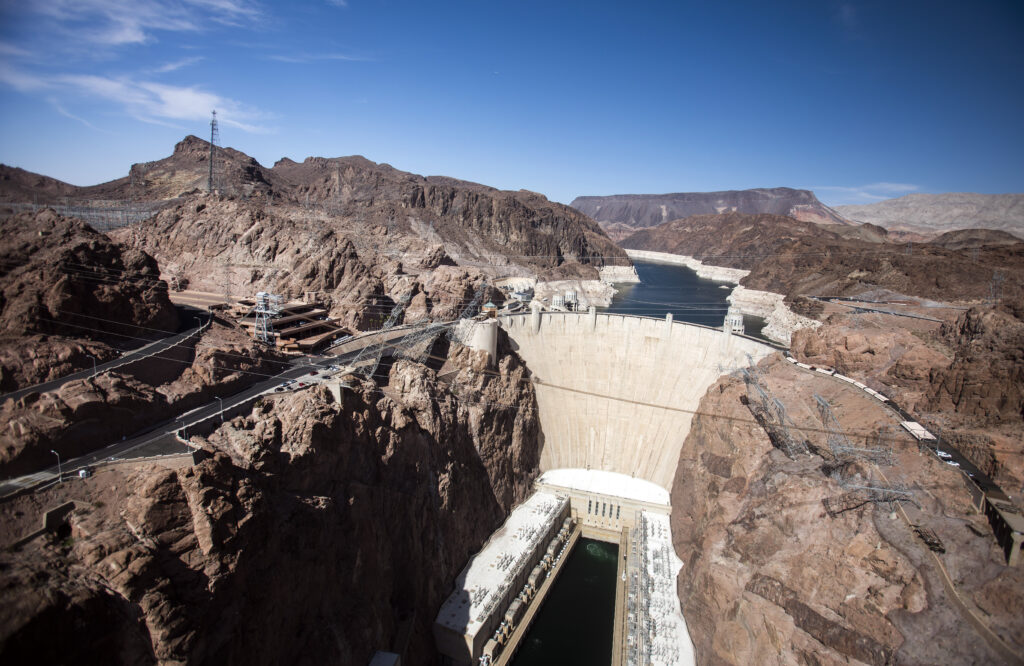
The regional significance of ripping out grass
In the West, municipal water agencies are wary of comparing their policies, sometimes for good reason. Every municipal water system is unique, even if they rely on the same water source. But many agencies have encouraged their customers to reconsider lawns.
Oftentimes, these rules apply to new development, said Peter Mayer, an expert in municipal water management who runs WaterDM, a consulting firm based in Colorado. What makes the water authority’s turf removal program significant is that it applies to existing decorative turf.
“The startling part of this proposal is the concept of removing existing turf,” he said.
Mayer said removing ornamental turf could put Las Vegas, which already uses a small amount of Colorado River water, in a powerful position as Colorado River negotiators meet to discuss how to manage the river after 2026. Las Vegas officials can now point to the clear and aggressive measures they have taken to ensure the sustainability of the river.
“That's a powerful position to take, especially when you've got upstream neighbors, such as Utah and Washington County, where they are proposing additional withdrawals,” he said.
For years, Utah’s Washington County, which includes St. George, has sought to permit a project that would divert Colorado River water from Lake Powell to southern Utah.
There are other less tangible benefits to removing turf.
Jennifer Pitt, the Colorado River program director for the Audubon Society, said removing decorative turf helps remind people in the Southwest that they live in an arid climate.
“It helps to change the local population's perception of where they live,” she said.
Water managers, she noted, are often wary of one-size-fits-all solutions. Different water agencies have different portfolios and demands. For instance, some cities within the Colorado River Basin rely on other water supplies, not just the Colorado River.
"At the same time, I think people can learn from each other, and I'm using people on purpose, because it's both water managers and also landscaping managers and communities,” she said.
In addition to leading the water authority, Entsminger serves as the president of the Colorado River Water Users Association. He declined to say whether other cities should adopt similar turf standards, but he said “everyone on the Colorado River, in all economic sectors, is going to have to use less water.”
"I think everybody has to use less water,” Entsminger said. “And if they want to choose having turf in a traffic circle over some other sector of their economy, then that’s their decision. But our decision is to really focus on the removal of this nonfunctional turf.”
